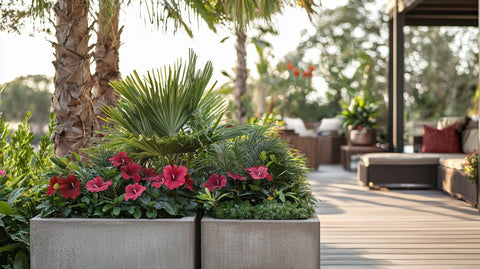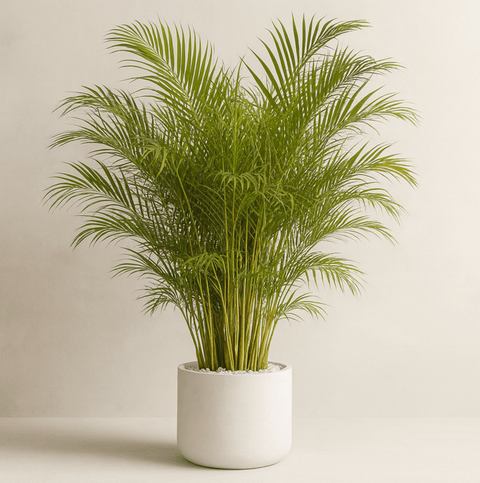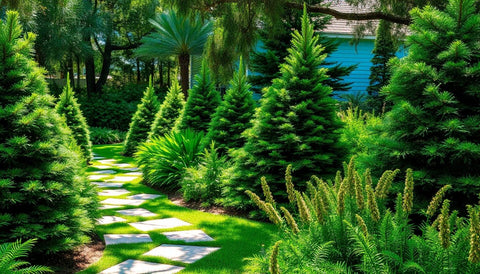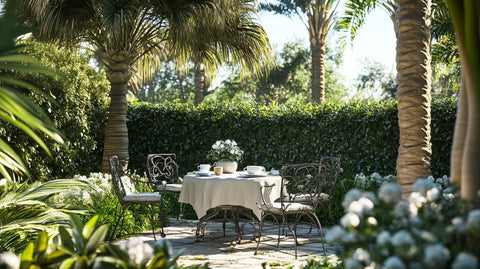Introduction
Florida is home to one of the most diverse plant ecosystems in the United States, teeming with an incredible range of native and exotic species that thrive in its unique climate. Did you know that the state hosts more than 4,000 species of native plants? This diversity is largely thanks to Florida's varying climate zones and its position as a tropical paradise. This guide aims to help residents, gardeners, and plant enthusiasts understand the intricacies of the Florida plant environment and effectively cultivate plants that can prosper in the Sunshine State.

Understanding Florida's Plant Ecosystem
A. Climate and Geography
Florida's geography stretches from the temperate northern regions to the tropical southern areas, making its climate one of the most varied in the country. The north experiences cooler winters and warmer summers, while the southern tip remains warm all year round, nurturing plants that require stable temperatures. Florida is divided into several USDA hardiness zones from 8a in the north to 11b in the far south. Understanding these zones is crucial for selecting the right plants for your garden.
B. Native vs. Non-Native Plants
The lush landscapes of Florida are supported by both native and non-native plants. Native plants, like the Alexander Palm, have evolved to survive the local conditions and support local wildlife. Non-native plants can thrive too but may require more care and attention. Our range includes stunning options like the Adonidia Palm, suitable for incorporation into any Florida garden.
C. Unique Challenges
The Floridian plant ecosystem does come with its own set of challenges including water management, humidity, pests, and diseases such as root rot and fungal infections. Choosing the right plants that can withstand these challenges is key to a thriving garden.
Choosing the Right Plants for Florida
A. Low-Maintenance Options
For beginner gardeners or those with demanding schedules, low-maintenance plants are ideal. Consider the resilient Agave Blue and the Agave Desmettiana Variegata, which require minimal watering and care, making them perfect for the Florida climate.
B. Florida-Friendly Plants
Florida-Friendly plants are those that sustain and thrive with minimal chemicals and irrigation. These include the Agapanthus Lily of the Nile, a beautiful blue flowering plant that adds a splash of color to your garden with minimal effort.
C. Designing a Florida Garden
Designing a Floridian garden involves incorporating a mix of native and non-native plants that work symbiotically. Consider layout plans that include shade-giving trees like the Alexander Palm mixed with vibrant flowering plants and succulents that can handle the harsher sun.
![]()
Top Plant Picks for Florida Gardens
A. Trees and Palms
Palm trees are synonymous with Florida's landscape. The Adonidia Palm is a versatile option suitable for residential spaces, offering elegance with minimal maintenance. Perfectly suited for garden focal points, they can transform any outdoor space into a tropical oasis.
B. Flowering Plants
For those in search of vibrant blooms, the Agapanthus Lily of the Nile offers striking blue flowers. They are suitable for pots or garden beds, making them flexible for various garden designs.
C. Succulents and Cacti
Succulents like the Caribbean Agave are highly recommended for gardeners looking for hardy, drought-resistant options. These plants add an exotic flair to gardens while requiring very little water.
Plant Care and Maintenance
A. Watering Techniques
Understanding the watering needs of your plants is crucial. Florida's humid climate can lead to overwatering, so it's essential to tailor your watering schedule to each plant species. Drip irrigation systems or soaker hoses can support minimal water usage and healthy plant growth.
B. Soil and Nutrient Requirements
Florida's sandy soil can often lack the necessary nutrients for healthy plant growth. Supplementing with organic compost and fertilizers that are suitable for the specific plant types can improve soil quality and plant health.
C. Pest and Disease Management
Keeping plants healthy also means managing pests and diseases. Regular checks and organic pesticide treatments can prevent and minimize damage. The diverse plant range from Plantology provides the right tools to tackle these challenges, keeping your garden lush and vibrant.

Creating Sustainable Gardens
A. Native Plant Integration
Incorporating native plants like our Silver Bay Aglaonema ensures that your garden is not only beautiful but also supports the local ecosystem. Native plants require less water and are adapted to local pests and soil conditions.
B. Water Conservation Strategies
Conserving water is vital, especially in Florida’s hot climate. Implementing rain barrels and drought-resistant plants can significantly reduce water usage. Consider creating landscapes that reduce lawn areas, opting instead for native plant beds that support sustainability efforts.
C. Organic Practices
Switching to organic gardening practices, such as using compost and natural fertilizers, promotes healthier gardens and reduces environmental impact. Our curated selection of organic-friendly plants ensures that you’re supporting both your garden and the planet.
Innovative Landscape Design Ideas
A. Vertical Gardens
Space constraints don't have to limit your green thumb. Vertical gardens help maximize space usage, and with options like hanging pots, even small Florida patios can become verdant retreats.
B. Themed Gardens
Creating themed gardens—tropical, desert, or native—offers a unique aesthetic appeal. Integrate palms like the Single Adonidia Palm for a tropical touch, or utilize succulents to design sleek desert themes.
C. Wildlife-Friendly Gardens
Designing your garden with wildlife in mind, incorporating bird baths, hummingbird feeders, and native nectar plants, can enhance local biodiversity and bring nature into your backyard.

Conclusion
Successfully cultivating a thriving Florida garden isn't just about choosing plants; it's about understanding the unique environment and employing strategic planning to create beauty and sustainability. With Plantology's extensive selection of plants tailored for Florida's climate, you can embark on a gardening journey that’s rewarding both in beauty and environmental impact.
Visit our Plantology website for more plant picks and expert guidance on creating your ideal Florida garden. Let us help you turn your outdoor space into a stunning oasis that you'll cherish for years to come.
Plantology: Where Passion Meets Expertise!
``` This content provides a comprehensive guide to Florida's plant ecosystem, taking you through the various aspects of gardening in Florida and subtly promoting Plantology’s offerings. Two clear CTAs are included to guide readers towards Plantology's products and website for further exploration. ```htmlExploring Florida's Diverse Plant Species
A. Native Flora
Florida's native flora is a testament to the state's rich biodiversity. Among the indigenous species you'll find the iconic Sabal Palm (Sabal palmetto), which serves as the state tree. Growing naturally in coastal areas, it's not only drought-resistant but also cold-hardy, making it an excellent choice for various garden settings in Florida.
Another notable native plant is the Firebush (Hamelia patens), a vibrant shrub that attracts hummingbirds and butterflies with its tubular red flowers. This plant flourishes in full sun and is both salt-tolerant and drought-resistant, making it ideal for a low-maintenance landscape.
B. Exotic Beauties
While natives form the core of sustainable gardening practices, exotic plant species add variety and allure to Floridian gardens. The Bougainvillea, with its cascade of vivid flowers, is a popular choice. These tropical climbers are perfect for trellises or container planting, and they thrive in Florida's abundant sunlight.
For those seeking unique floral displays, the Bird of Paradise (Strelitzia reginae) cannot be overlooked. This plant's striking bloom resembles an exotic bird and adds a touch of the extraordinary to garden designs. It prefers well-drained soil and benefits from regular watering and feeding.
C. Edible Landscapes
Integrating edible plants into your garden not only provides fresh produce but also enhances your landscape's beauty. Florida's climate is suitable for a variety of fruits, vegetables, and herbs. Consider planting citrus trees like the Meyer Lemon or the Sweet Orange for their delightful scent and juicy fruits.
Herbs such as basil, rosemary, and lemongrass are perfect for Florida gardens. These herbs are easy to care for and can be grown in both pots and directly in the garden. They thrive in Florida's warm climate and offer a fresh supply for culinary enthusiasts.

The Importance of Soil Health
A. Understanding Soil Types
Florida's soil varies from sandy to clay-like, with the majority being predominantly sandy, which can pose a challenge for nutrient retention. Identifying your soil type is the first step in ensuring your plants receive the necessary support for optimal growth.
Sandy soils, while providing excellent drainage, often lack the organic matter crucial for sustained plant nutrition. Amending the soil with organic compost can enhance its texture and nutrient profile, promoting healthier plant growth.
B. Soil pH and Testing
Understanding the pH level of your garden soil is vital, as it affects the availability of nutrients to your plants. Soil testing kits are available and advisable whether you're planting a new garden or looking to improve an existing one.
Most Florida plants prefer a slightly acidic to neutral soil pH (around 6.0 to 7.0). Adjusting your soil's pH with lime (to raise pH) or sulfur (to lower pH) can create the ideal growing environment for your plants.
C. Enhancing Soil Fertility
Regularly enriching your soil with organic matter can significantly improve its fertility and plant productivity. Incorporating garden waste compost, well-rotted manure, and other organic fertilizers can enhance soil structure and nutrient content.
Mulching is another effective method for improving soil fertility. Mulch not only retains moisture but also decomposes over time, contributing organic material back into the soil, sustaining healthy plant life.
Water-Smart Gardening Practices
A. Efficient Irrigation Systems
Implementing efficient irrigation systems is crucial in a state where water conservation is heavily emphasized. Drip irrigation and soaker hoses are excellent choices as they deliver water directly to the plant roots, minimizing evaporation and water waste.
Automating your irrigation with timers ensures that plants are consistently watered and helps prevent overwatering—a common issue due to Florida's occasional heavy rains.
B. Mulching for Moisture Retention
Mulching serves as a natural moisture-retention barrier, significantly reducing water usage. It also suppresses weed growth and protects plant roots from temperature fluctuations.
Organic mulches, such as wood chips, bark, and pine straw, gradually decompose, adding nutrients to the soil and fostering a healthier growing environment.
C. Drought-Resistant Plants
Opting for drought-resistant plants is a smart choice for Floridian gardens. These plants can survive prolonged dry spells with minimal watering, thus conserving water.
Consider species like the Sea Grape (Coccoloba uvifera) or the Coontie (Zamia integrifolia), both of which cope well with dry conditions and bring unique characteristics to garden settings.

Attracting Wildlife with Plants
A. Bird-Friendly Habitats
Creating bird-friendly gardens involves planting native shrubs and trees that provide food and shelter. The Wax Myrtle (Morella cerifera) and the American Elderberry (Sambucus canadensis) provide berries and dense foliage ideal for attracting a range of bird species.
Incorporating flowering plants that produce seeds or nectar, like the Coneflower (Echinacea spp.) or Coreopsis (Coreopsis spp.), can also draw nectar-feeding birds to your garden.
B. Butterfly and Pollinator Gardens
Butterflies, bees, and other pollinators are crucial for the reproductive success of many plants. Designing gardens with a variety of flowers that bloom at different times ensures continuous food supply for these beneficial insects.
Plants like the Butterfly Weed (Asclepias tuberosa) and the Passionflower (Passiflora incarnata) not only attract pollinators but also provide larval host plants for butterfly species such as Monarchs.
C. Diversifying Habitats
Diversifying garden habitats by including a mix of plant types and structures encourages not only pollinators and birds but also other wildlife species. Ground covers, shrubs, and tall trees all contribute to a multi-layered ecosystem.
Using native grass species such as Muhly Grass (Muhlenbergia capillaris) can create shelter for small mammals and protect soil from erosion, thus enhancing biodiversity.
Environmental Impact and Sustainability
A. Reducing Chemical Use
Minimizing the use of chemicals in the garden promotes a healthier environment. Organic gardening relies on natural pest control methods, such as introducing beneficial insects like ladybugs or practicing crop rotation to reduce pest incidence.
Natural fertilizers derived from compost, fish emulsion, or seaweed extract can provide nutrients without the adverse environmental effects associated with synthetic fertilizers.

B. Recycling and Composting
Recycling garden waste into compost creates a valuable resource, enriching the soil with essential nutrients and improving soil structure. Composting reduces landfill waste and returns organic matter to your plants.
Creating a compost pile in a shaded area of your garden and regularly turning it ensures it breaks down efficiently. Using compost in your garden can act as a natural soil amendment, benefiting plant health.
C. Embracing Biodiversity
Encouraging biodiversity is essential for the resilience of garden ecosystems. Diverse plantings help stabilize insect populations and support wildlife, creating a balanced and healthy environment.
Varied plant species serve different ecological roles, from providing food and shelter to contributing to nitrogen fixation in the soil. Plant diversification also decreases the risk of disease and pest outbreaks.
Engaging with the Local Plant Community
A. Joining Gardening Clubs
Engaging with local gardening clubs provides an opportunity to learn from experienced gardeners and exchange knowledge and tips about regional plant care. These networks often hold events, workshops, and plant exchanges that can enrich your gardening journey.
Consider joining organizations such as the Florida Native Plant Society, which offers valuable resources on native plant species and promotes sustainable garden practices within the local community.
B. Attending Workshops and Events
Local botanic gardens and nature centers frequently host workshops, seminars, and plant sales. These events are invaluable for gardeners seeking to expand their understanding of plant care, garden design, and environmental stewardship.
Check community events listings for gardening-specific workshops that can provide hands-on experiences and further education on native and exotic plant cultivation in Florida.
C. Volunteering Opportunities
Volunteering at local gardens or conservation projects allows you to contribute to ecological efforts while expanding your plant knowledge. These opportunities are ideal for engaging with like-minded individuals and learning new techniques in managing native and non-native gardens.
Participating in restoration projects or community beautification projects can also instill a sense of pride and accomplishment, knowing you’re contributing to the protection of Florida's unique ecosystems.

Conclusion
Building a successful Florida garden, brimming with diverse plant life, requires a blend of knowledge, planning, and respect for the environment's intrinsic qualities. With the resources and expertise available from Plantology,






























Comments (0)
There are no comments for this article. Be the first one to leave a message!